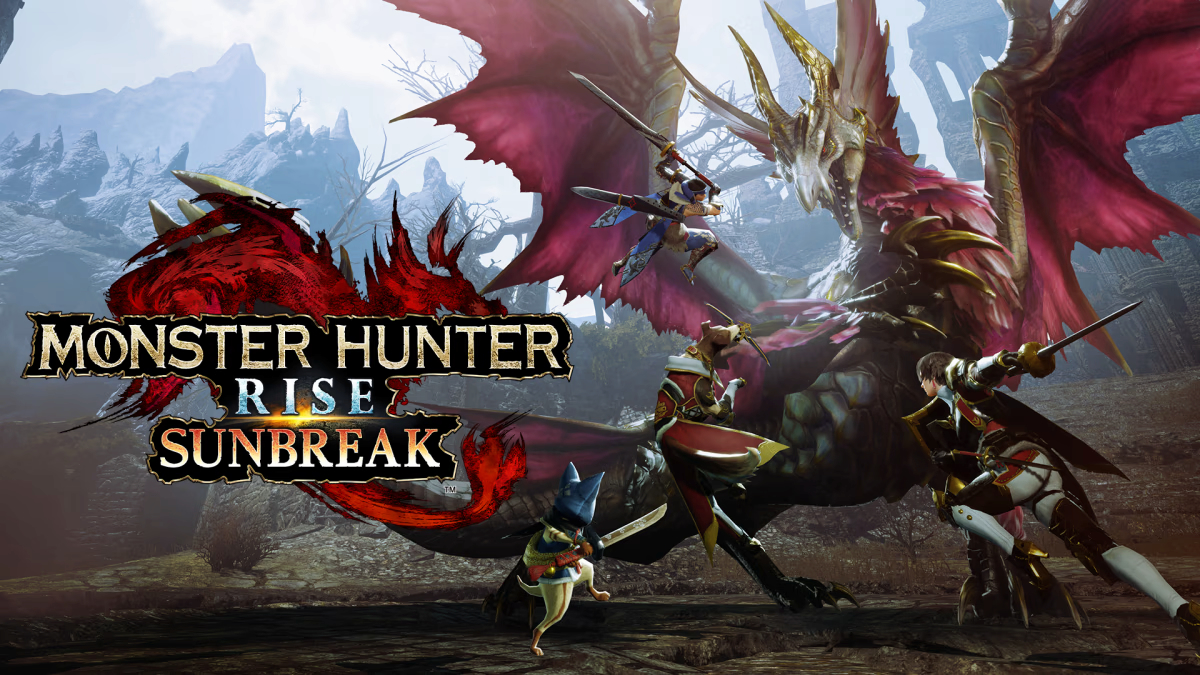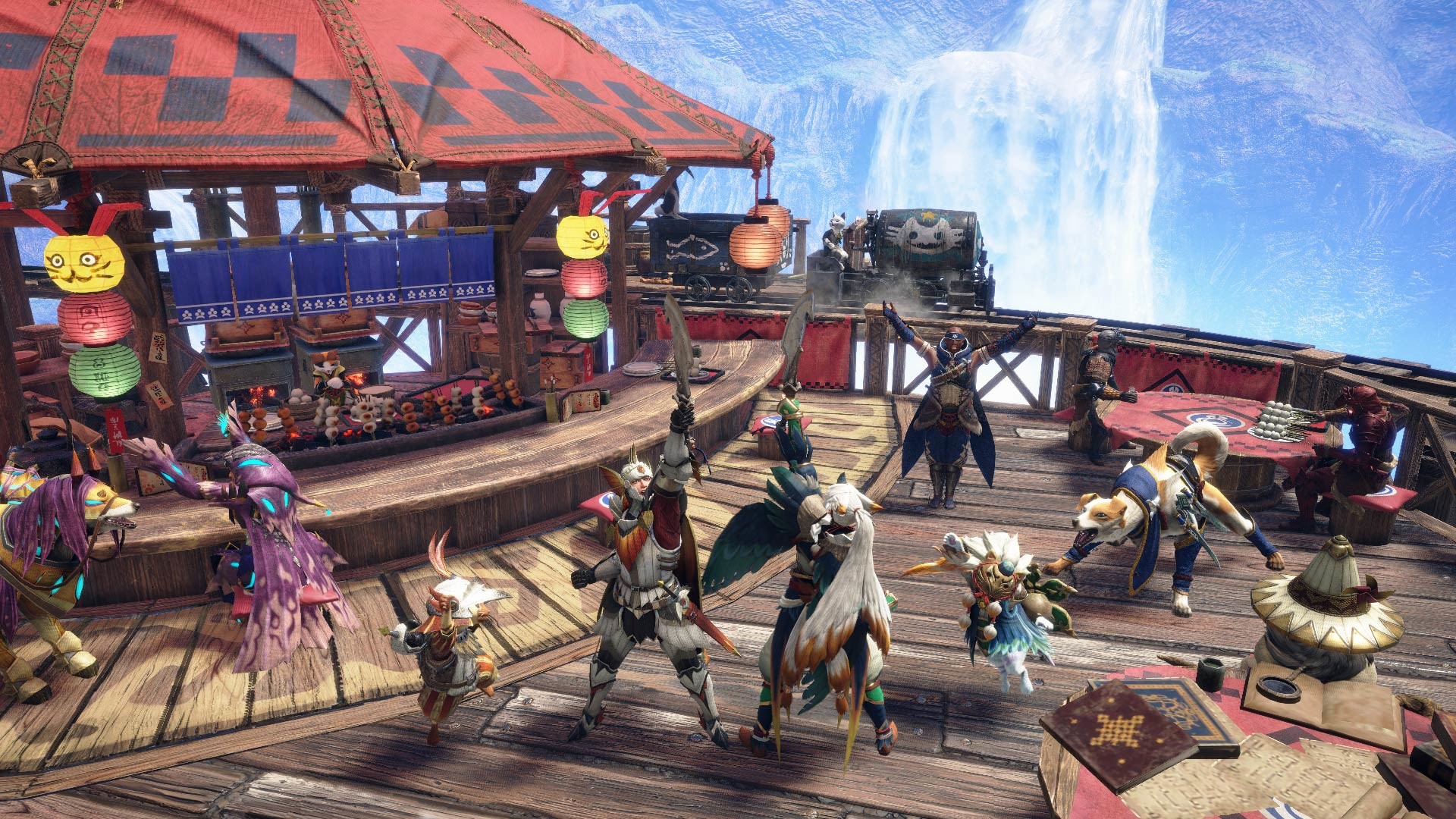Monster Hunter Rise Sunbreak takes everything great about the base game and turns it up to 11. Every monster you faced in vanilla has new moves, and all-new monsters are at least a pleasure to fight. Some new additions, like the flagship Malzeno, are some of the best fights in the game and the franchise.
Sunbreak even goes so far as to bring back classic monsters and zones and give them a proper glow-up. Add in a slew of new moves for the player and plenty of quality of life improvements, and this expansion almost has it all. It doesn’t fix some of my frustrations with the game, though those are mostly minor.
Monster Hunter Rise Sunbreak Review: A Shining Star
Sunbreak introduces more than a dozen new monsters and monster variants, almost all of which are straight-up improvements on base game offerings. Malzeno, the flagship monster for the expansion, is a major highlight, but other monsters easily reach his level of quality.
All of the base game monsters received significant updates, as well. From the lowly Great Baggi to the legendarily punishing Teostra, every vanilla beast has new attacks, changes to its AI, and of course, a massive increase to its health pool and damage output. Experienced hunters and veterans of the series will still need little time to learn and master these updated monsters, but some of the strategies from vanilla Rise no longer apply.
Monster progression remains relatively unchanged, despite the across-the-board updates. You’ll start fighting Izuchi, Wroggi, Lagombi, and the like, and as you progress through the story and upgrade your gear, you’ll face the same sequence of monsters from the base game. Early monsters don’t deal a ton of damage, but they are still threatening.
The first real challenge, or possible wall you face, will probably occur after about six or seven quests into Master Rank, depending on how much early-game grinding you do. The challenge doesn’t ramp up severely until midway through the campaign, at which point it spikes and doesn’t come down. Thankfully, by that point, you should have the gear and experience to take on whatever challenges come your way.
Mechanics, Mechanics, Mechanics
Not one to rest on its laurels, Capcom went beyond updating monsters and reworked how you fight. The most important change made to combat is the Switch Skill Swap, providing two loadouts of Switch Skills that you can swap between in the heat of battle.
In so doing, combat can be even more aggressive and fluid while offering more options regardless of playstyle. Initially, I didn’t use Switch Skill Swap at all, as the way I fought in Rise was still more than effective. The whole game suddenly changed when I added the Swap to my repertoire.
Monster Hunter Rise combat is already complex enough, and some players are bound to be overwhelmed by the greater variety of options. Thankfully, as I experienced early on, fighting the way you do in the base game is still more than doable, and the Swap is there only if you want to take your game to a new level.
The smaller quality of life improvements are welcome as well, the best of them being the ability to wall run without needing to Wiredash into a wall. Having the option to Wyvern Ride or not when you attack a monster is great. There are even new types of Wirebugs specific to Wyvern Riding that either increase rewards or damage while active, adding incentive to use the mechanic.
These updates only enhance the core gameplay, which remains incredibly solid. Wirebug traversal, gathering, and everything else is intact. There are many easier, more comfortable ways to do most of it.
My main complaint with the mechanics isn’t new. There has always been a significant input buffer for using items, especially off the quick-select wheel. That issue is exacerbated by the speed and ferocity of Master Rank monsters. I spent more time yelling at the game to use a healing item than I did being annoyed with the monsters themselves.
But How’s the Gear?
It wouldn’t be a Monster Hunter game without powerful weapons and armor, most of which look fantastic and are incredibly satisfying to use. Sunbreak doesn’t disappoint in this regard. The weapons you enjoyed in the base game all have new upgrade paths in Master Rank, and all are better.
The first bits of gear you unlock will be relatively uninteresting, with armor granting higher defense and weapons offering higher damage, but they’ll quickly be outclassed by mid-game equipment. Expect the gear sets you’re familiar with, Nargacuga in particular, to still be top-tier, but plenty of new and excelling choices outclass the base game options.
Sunbreak also sees some significant balance updates to the best weapons and perks, either changing their skills or altering the bonuses they provide. Some late-game perks will likely shake up the meta, especially at the highest levels of play. Casual players will still see plenty of benefits from the tried-and-true skills.
The only issue with the gear game is as old as Monster Hunter itself: if you don’t already have the lower-level version of something you want, you need to engage with the old content. Depending on the rarity of the drops you need, you could be spending an hour or more without progressing in the expansion. With some of the best weapons in Sunbreak being an advanced version of base Rise equipment, if you want the good stuff, you’ll need to go backward.
This issue is especially true for Decorations. Many must-have Decorations haven’t changed much and are also locked behind base Rise content. They aren’t required to progress the Sunbreak campaign but come the endgame, you’ll want to have at least a few of the meta options, and getting them does nothing to advance the post-game story.
A Tale as Old as Monster Hunter
Where the mechanics, gear, and monsters in Sunbreak reinvent or expand on an already great offering, the story of the expansion is stuck in the past. It’s structurally identical to Iceborne while using the Rise progression system. Every major story beat occurs after two or three Master Rank quests, and the story itself is bog-standard Monster Hunter.
Not that this series is known for its stirring narratives, but it would have been nice to see Capcom shake things up the way it did with the rest of the expansion. Given how much is accomplished elsewhere, it’s understandable from a budgetary and time perspective. Still, the same story for at least four 40+ hour experiences going back to base World is getting a little tiresome.
The new Elgado hub space also doesn’t impress as Seliana did in Iceborne, being smaller and less aesthetically complex. The character designs are on point, as always, but the area doesn’t have the same narrative or mechanical oomph as previous hubs.
Monster Hunter Rise Sunbreak Review — The Bottom Line
Pros
- Expansive changes to weapons, monsters, and gameplay.
- Some of the best fights in the series.
- Even more choice for how you want to play.
Cons
- A few mechanical holdover issues from the base game.
- The story is bog-standard, uninteresting Monster Hunter fare.
- Occasional over-reliance on old content.
Monster Hunter Rise Sunbreak is a worthy expansion on an already fantastic game. It adds some of the best fights in the game, updates every monster with new attacks and patterns, and gives players new ways to build and play far beyond what anyone would expect. It’s more complex mechanically but still easy to learn, and while it can be punishing at times, it is still a source of some of the most satisfying gameplay in our medium.
There are minor issues, like somewhat unresponsive controls, an over-reliance on old content, and a bit of asset reuse, but these are minor problems overall. The story’s lack of innovation is probably the biggest offender. Given the scope of the more important updates, I’m only so unhappy there.
If you loved the base game of Monster Hunter Rise, Sunbreak is one of the easiest purchases you’ll make this year. If you’ve never played a Monster Hunter game or have been waiting for the “full” experience, the base game and expansion package is equally recommendable.
Monster Hunter provides a rush and a challenge few games can match, and those pair well with a heavy build customization system and a sky-high skill ceiling. In short, Monster Hunter Rise Sunbreak is good. It’s very good and worth every penny of its asking price several times over.
[Note: Capcom provided the copy of Monster Hunter Rise: Sunbreak used for this review.]









Published: Jun 28, 2022 06:40 pm